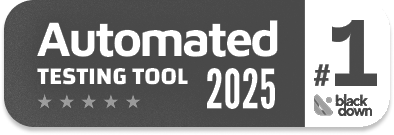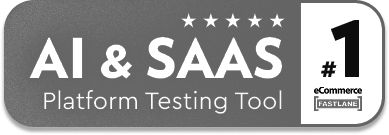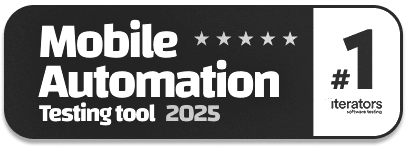E-Commerce Software Development – End-to-End Guide
|
|
In today’s modern, digital-first economy, e-commerce has become essential for businesses as well as consumers. Businesses use it to tap broader markets and enhance customer experience, while consumers find it convenient and hassle-free. Owing to this growing e-commerce popularity, e-commerce software development has become crucial than ever.
This guide provides a comprehensive, end-to-end overview of the e-commerce software development process, from initial planning to post-launch support. It also covers security and cost considerations.
| Key Takeaways: |
|---|
|
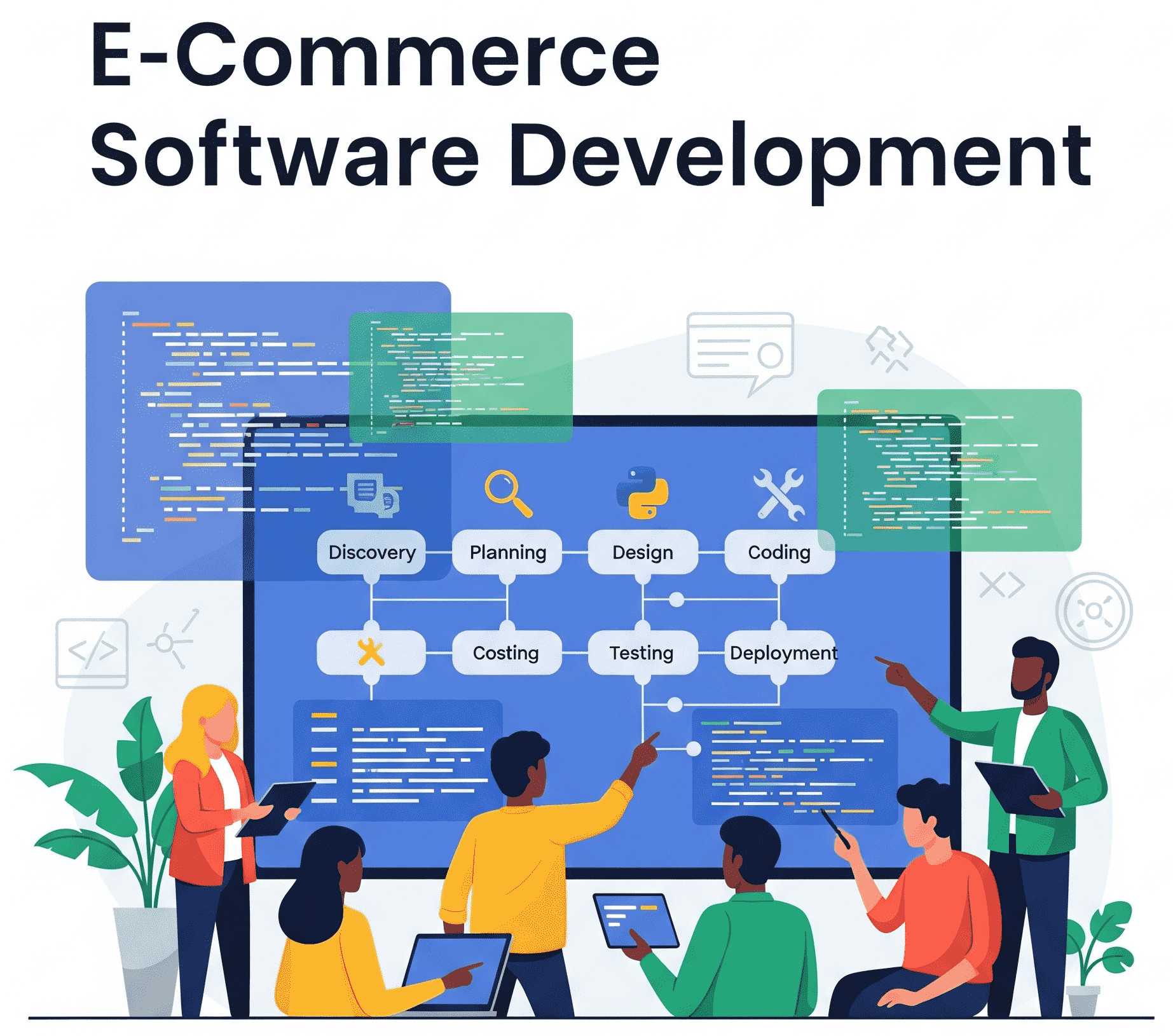
Why Do We Need E-Commerce?
Imagine receiving an alert on your mobile phone from your kid’s school at 8:00 p.m. stating that your kid should wear a green T-shirt tomorrow.
Your kid does not have a green t-shirt, and it is too late to hop shops now searching for it. What is the solution? You click here and there on your smartphone, select a green colored t-shirt, pay money, and in the next 2 hours, you receive the t-shirt at your doorstep.
Thus, whether you are a startup or an enterprise, developing a robust e-commerce platform is the need of the hour. Creating an e-commerce platform is not just a technical task but a strategic decision because customer satisfaction in the digital world is based on how businesses build and run their online businesses or stores. This, in turn, brings in brand loyalty and income. E-commerce software is the engine that powers marketing, logistics, support, and business growth.
Understanding the E-Commerce Software Landscape
What is E-Commerce Software?
E-commerce software helps businesses perform online transactions. It helps with product display, shopping cart management, secure payment processing, and order delivery. Most businesses today have an online presence that helps them broaden their customer base without boundaries and earn more money.
Types of E-Commerce Models
The following are the types of e-commerce models that are popular today:
- B2C (Business to Consumer): The B2C model directly sells to customers. For example, Amazon retail has a wide range of products that sell directly to individual consumers.
- B2B (Business to Business): This model involves selling products/services to other businesses. The e-commerce giant Alibaba is an example of the B2B model.
- C2C (Consumer to Consumer): A Platform like eBay is a C2C model and allows individuals to sell products to others.
- D2C (Direct to Consumer): Some manufacturers sell directly to consumers, bypassing retailers. This is the D2C model, and companies like Dell and Apple follow this model.
Must-Have Elements for An E-Commerce Software
In general, e-commerce websites across the globe have an average conversion rate of 2.58%. However, e-commerce giants like Amazon have it higher at 13%. But why such a disparity in average conversion rates? What is it that industry-leading eCommerce platforms have that others don’t?
A detailed analysis of several e-commerce platforms shows that top elements are a must-have for e-commerce software. These elements are listed here:
- Clear Navigation: The Website should be easy to navigate with clearly defined navigation.
- High Quality Product Images: Product images should be high-quality and clear enough for users to make a decision when they view them.
- Detailed Product Descriptions: Product descriptions should be detailed and cover all aspects of the product.
- User Reviews and Ratings: User reviews should be conducted regularly and updated for the product.
- Secure Checkout: The Checkout process for the product should be secured and without any glitches. Also, various payment methods should be incorporated for user convenience.
- Search Functionality: The Website should have sophisticated search functionality, and results should be available promptly whenever a user searches for a product.
- Responsive Design: The website should be responsive.
What is E-Commerce Software Development?
The process of buying and selling goods or services over the internet is e-commerce. An e-commerce software is a digital tool or platform that helps e-commerce businesses perform their operations online.
An e-commerce software has the following features:
- Product Catalog
- Shopping Carts
- Payment Processing
- Order Management
- Inventory Tracking
- Customer Management and Support
E-commerce software development is the process of designing, customizing, developing, and maintaining a digital platform with all the aforementioned features.
This process includes everything from shopping cart and payment processing to backend inventory and logistics management. Logistics management further provides functions such as warehouse operations, shipping coordination, and delivery timelines.
The entire e-commerce software development process is essential not just for setting up digital storefronts but also for ensuring efficient coordination across sales, marketing, logistics, customer service, and order fulfillment.
It also has to encompass e-commerce app development, considering the rise in mobile-first consumers. Apart from being high-performing, mobile applications must provide functionalities like intuitive user experiences, real-time sync with inventory, and secure payment processing, optimized for smartphones and tablets.
According to CapitalOne Shopping, the number of individuals shopping online was more than 2.71 billion globally in 2024 alone. This makes e-commerce software development all the more crucial as companies implementing a reliable, user-friendly e-commerce platform are in the perfect position to benefit from huge potential markets and rise above the rest.
Different Types of E-Commerce Software Development
E-commerce software development offers various types of software development. Choosing the right type depends on the desired work processes and business requirements. These types are discussed here along with their pros and cons.
1. Open-Source E-Commerce Platforms
Open-source e-commerce platforms offer full code access for total customization. They allow businesses maximum control and provide flexibility and independence from vendor restrictions.
Pros:
- Suitable for individual business scenarios
- No recurring licensing fees
- Wide community and plugin support
- Ideal for long-term flexibility and scaling
Cons:
- Technical expertise is required for setup and maintenance
- Development and deployment time are high
- Security and updates should be done manually
- Possible issues with third-party integration
Read: Open Source Software Development: The Pros and Cons
2. Software as a Service (SaaS)
SaaS platforms are the easiest, fastest, and most cost-effective solution for small businesses. They are popular with companies that want their online store set up immediately at an affordable price, with embedded functionality, and round-the-clock assistance.
Pros:
- Easy setup and maintenance
- Hosting and support are included
- Frequent updates and security fixes
- Lower upfront cost
Cons:
- Limited customization options
- Monthly or yearly subscription fee
- No control over the source code
- Extra fees for apps or advanced features
Read: SaaS Testing: Automate for Scalable Application Quality
3. Platform as a Service (PaaS)
PaaS provides managed cloud infrastructure and tools to support large eCommerce websites. There is no need to manage servers or configure an extensive backend.
Pros:
- Offers scalability and flexibility
- Provides advanced integrations and tools
- Infrastructure need not be managed extensively
- Shorter development times
Cons:
- Expensive than SaaS
- Requires development expertise
- Limited control compared to full control or on-premise solutions
- Steep learning curve for platform-related tools
4. Custom-Built E-Commerce Development
Customized platforms are built from scratch according to the organization’s requirements. This ensures complete control over UX/UI, functionality, and brand. Customized solutions are tailored for unique operational models.
Pros:
- Complete control and flexibility
- Built for organization-specific workflows
- No limitations with regard to platform
- Unique brand and user experiences
Cons:
- Higher upfront cost
- Development and testing cycles are slower
- Requires professional development expertise
- Needs continuous maintenance and updates
Read: Enterprise Software Development vs. Regular: A Clear Comparison
5. On-Premise E-Commerce Development
On-premise solutions are configured on organization’s location and provides full control, security, and privacy to the organization. However, this comes at a higher cost and complexity.
Pros:
- Maximum control over software and data
- No dependency on external hosts
- Flexible security requirements
- Ideal for heavily regulated industries
Cons:
- Maintenance is costly
- Requires technical expertise
- Longer setup and scaling time
- Limited remote accessibility
These e-commerce software development types vary according to requirements, type of industry, and other factors.
Importance of E-Commerce Software Development
The online market is highly competitive, and e-commerce software development is crucial for it to thrive. Using the right e-commerce software development technology, companies can expand their operations, broaden their markets, and provide excellent shopping experiences to their customers.
Some key benefits of having an e-commerce store for your business are:
-
Increased Sales and Revenue: e-commerce software development offers:
- Global Reach: With e-commerce software, geographical limitations are removed, and companies can sell to customers globally.
- 24/7 Availability: Online stores, unlike offline stores, are available 24×7, providing customers with convenient shopping options and maximized sales opportunities.
- Personalized Experiences: E-commerce platforms can personalize the products based on product recommendations and customer preferences. This increases customer engagement and sales.
- Streamlined Transactions: E-commerce encounters higher conversion rates with efficient checkout, multiple payment options, and secured transactions.
-
Cost Reduction: E-commerce software affects the cost in the following ways:
- Reduced Overhead: The Overall cost of e-commerce businesses is lower compared to traditional offline stores, as online stores don’t require physical storefronts, staff, infrastructure, and related expenses.
- Efficient Inventory Management: Optimized inventory levels in an e-commerce store minimize the storage cost and prevent overstocking and stockouts.
- Lower Marketing Expenses: Digital marketing strategies and targeted advertising are more effective in e-commerce platforms, thus reducing overall marketing costs.
-
Improved Customer Experience: E-commerce software provides improved customer experience through:
- Convenience and Flexibility: With an e-commerce store, customers can shop anywhere, anytime, and on any device. This makes shopping convenient and flexible.
- Personalized Recommendations: Tailored product recommendations and offers based on frequent browsing and purchase behavior enhance the customer experience.
- User-Friendly Interfaces: With e-commerce store’s clear product information, intuitive navigation, and easy checkout processes, customers get a positive shopping experience. Customers have greater satisfaction and return to the store often.
- Enhanced Customer Support: E-commerce software platforms integrate with customer support systems to provide quick and efficient support to resolve customer queries.
-
Enhanced Operational Efficiency: Thanks to e-commerce software development, the e-commerce store has enhanced operational efficiency:
- Automated Processes: Tasks such as inventory management, order processing, shipping cycles, and customer notifications are automated.
- Data-Driven Insights: E-commerce provides valuable insights into customer behavior, sales trends, and product performance through data analytics, enabling businesses to make informed decisions.
- Scalability: E-commerce software is easily scalable to accommodate increased traffic, business growth, sales volume, and product offerings. The system can be scaled without having to re-architect the entire platform.
- Improved Security: E-commerce software incorporates robust security measures to protect sensitive customer data and payment information. It utilizes strong cybersecurity protection, SSL encryption, and fraud prevention for online store security.
E-commerce software development offers a multitude of benefits for businesses as listed above. This leads to increased revenue, reduced costs, improved customer satisfaction, and enhanced operational efficiency.
Features for E-Commerce Software Development
Every e-commerce website must have the following features:
- User-Friendly Interface: An easy-to-use navigation and design so that customers can easily navigate to the desired page, view, and purchase items.
- Secure Payment Gateway Integration: An e-commerce website must ensure safe and secure transactions to reduce the risk of payment fraud and build trust.
- Mobile Responsiveness: E-commerce software should deliver a seamless, optimized shopping experience across all devices, including smartphones and tablets.
- Search and Filtering Options: An e-commerce website should have powerful filters and keyword matching options so customers can easily find what they want with minimal effort.
- Inventory and Order Management: Tracking product inventory levels, orders, and shipping updates in real time ensures minimal out-of-stock occurrences and proper reordering.
- Customer Reviews and Ratings: Customers can provide feedback and ratings about a particular product. An e-commerce website can incorporate these to make improvements.
- SEO Tools: SEO tools assist with optimizing existing product pages and metadata to rank effectively for greater organic traffic.
- Analytics and Reporting: To develop effective marketing strategies and improve customer engagement, analytics and reporting are essential as they collect and analyze performance data.
- Automation: Repetitive processes like ordering, checkout, and so on can be streamlined by automating certain tasks for smoother transactions. For example, in the checkout process, calculating prices, taxes, handling costs, and delivery fees can be automated.
- Website Builder: Using website builders enables organizations to design and update websites using custom templates.
- Central Data Center: Data accuracy and integrity are elevated with the centralization of product and customer data in one database.
- Integration: An e-commerce software should integrate well with third-party platforms, including CRMs, accounting, and shipping providers for automation.
Step-by-Step E-Commerce Software Development Process
E-commerce software development helps you organize, develop, and run an e-commerce project efficiently from the basic idea to the deployment. Here is the step-by-step process of e-commerce software development.
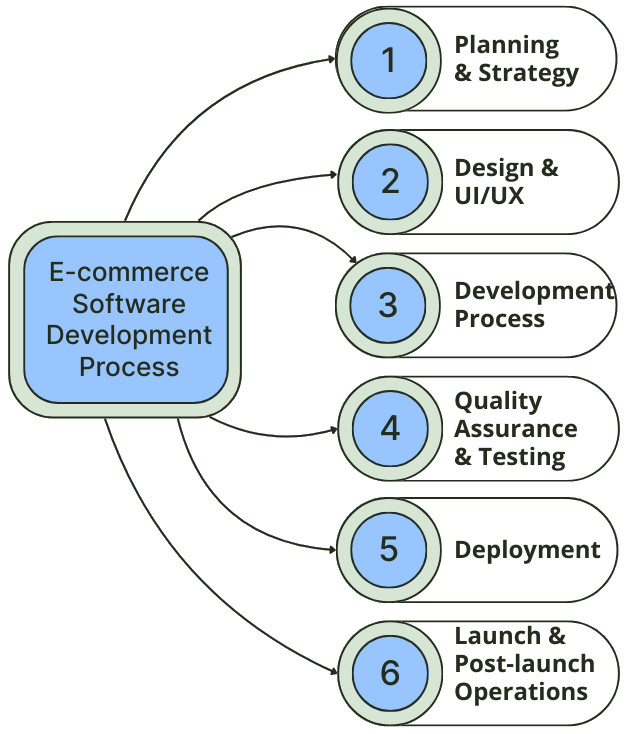
1. Planning and Strategy
In this phase, business objectives, the target audience, competition, and platform requirements are identified and defined. This is the foundational step to align the objectives with market vision and customer expectations.
The following table provides detailed information about the objectives gathered during the planning and strategy phase:
| Main Objectives | Details |
|---|---|
| Market Research and Target Audience |
|
| Business Goals and KPIs |
|
| Budgeting and Timeline |
|
As part of planning and strategy, you can also choose the right technology stack to work with. The following key considerations should be given while choosing a technology stack:
- Scalability of the software
- Security and compliance
- Developer availability
- Community support
- Integration capabilities
2. Design and UI/UX
In this phase, the design of UI/UX wireframes with respect to user flow and responsiveness is finalized. Ensure your website looks sharp, attractive, works well, and is user-friendly on all devices.
To ensure this, consider the following points in this phase:
-
User-Centric DesignFor an e-commerce store to be successful, prioritize the following:
- Simple navigation
- Fast load times
- Intuitive product filtering and search functionality
- Accessible design for all users
-
Mobile-First ApproachMobile transactions account for almost 70% of total e-commerce transactions. Hence, a mobile-first approach should be adopted while designing to ensure:
- Responsive design for the website
- Mobile-optimized checkout process
- Finger-friendly navigation
-
Branding and AestheticsAn e-commerce website should be appropriately branded to stand out from its competitors. Ensure:
- Consistent use of colors, fonts, and visuals enhances trust and recall.
Read:
3. Development Process
After all the requirements and design are finalized, the third phase begins. In this phase, developers work on the front and back end, APIs, e-commerce shopping cart, and database connection.
The design finalized in the earlier phase is made functional through coding. The following table shows the steps performed in the development phase:
| Steps | Details |
|---|---|
| Architecture Setup | In this step, the following entities are defined:
|
| Core Modules to Develop | The following modules are developed in this step:
|
| APIs and Integrations | Decisions regarding APIs and integrations are also taken:
|
4. Quality Assurance & Testing
When you enter this phase, the development has been completed. Now it is time to test the functionality, usability, and security of the e-commerce software just developed. This phase ensures the deliverables are secured and bug-free. Testing guarantees the software behaves as expected, is not vulnerable, and offers a great user experience.
The following types of testing can be used to ensure thorough testing of the e-commerce software:
- Functional Testing: Does every feature work?
- Performance Testing: Can the app handle expected traffic?
- Security Testing: Protect against SQL injection, XSS, etc.
- Usability Testing: Is the user experience intuitive?
- Cross-Browser/Device Testing: Consistent UI across platforms
In this phase, manual or automation testing, or a combination of both, can be used to get the best outcomes.
Consider using the following tools for automation testing:
- testRigor UI testing as its use of AI lets you write tests in plain English, reduce test maintenance costs, and get reliable test runs
- Jest or Mocha for unit tests
- JMeter or k6 for load testing
Note: Perform regression testing (either manual or automated) for every major update.
Read:
- E-Commerce Testing: Ensuring Seamless Shopping Experiences with AI
- Future of E-commerce and Automation Testing
5. Deployment
Move the thoroughly tested software to a live environment and ensure all the systems and integrations are working as expected. This phase of deployment involves:
- Set up web servers, databases, and domains
- CI/CD Pipelines
- Implement continuous integration and deployment workflows
- GitHub Actions, GitLab CI/CD, Jenkins
- Auto build, test, and deploy to staging/production
- Hosting Setup
- Choose between VPS, cloud, or PaaS
- Set up load balancers and failover mechanisms
- Monitor uptime and logs
- Domain & SSL
- Use reputable registrars (GoDaddy, Namecheap)
- Enable HTTPS via SSL/TLS certificates (e.g., Let’s Encrypt)
6. Launch & Post-Launch Operations
This phase involves debugging and updating features, along with testing the website’s performance. Continuous support is also provided so that the platform remains updated with user expectations, security regulations, and business requirements.
The following Go-Live Checklist should be completed on the launch:
- Domain pointing
- SSL enabled
- Payment gateways live
- DNS propagation confirmed
- Redirects and SEO meta tags are in place
Once the e-commerce software website is successfully launched, monitor the website using:
- Real-time performance tracking
- Error logs
- Conversion funnel monitoring
- Customer feedback collection
Technologies Used in E-Commerce Development
Nowadays, e-commerce development uses multiple programming languages, frameworks, and tools to build superior, fast, scalable, and secure shopping platforms. The following are the technologies used in e-commerce software development:
| Tools/Technologies/Frameworks | Examples |
|---|---|
| Frontend | CSS, HTML, and JavaScript (React.js, Vue.js, Angular) |
| Backend | PHP, Node.js, Python (Django), PHP (Laravel), Ruby on Rails |
| Databases | PostgreSQL, MySQL, MongoDB |
| E-Commerce Platforms & Frameworks | Magento, Shopify (Headless), WooCommerce (WordPress), BigCommerce, Salesforce Commerce Cloud |
| Hosting & Infrastructure | AWS, Google Cloud, Azure, CDN providers (Cloudflare, Akamai) |
| Payment Gateways | PayPal, Stripe, and Square |
E-commerce software development also uses artificial intelligence (AI) that drives personalization, automation of inventory, chatbots, and demand predictions based on historical purchase patterns. Services such as AWS Lambda and Google Cloud Functions help developers to run the code without installing servers. A responsive, mobile-ready, CSS framework provides built-in templates for the site.
Read: How to Choose the Right Tech Stack for Engineering?
Security and Compliance Considerations in E-Commerce Software
An e-commerce software must be secure and compliant. Some of the best practices to be followed are:
- Use HTTPS everywhere
- Include SQL injection and XSS protection
- Provide password hashing with bcrypt/scrypt
- Offer data validation and sanitization
As far as legal compliance is concerned, ensure the e-commerce website is standardized for:
- Data standards like GDPR and CCPA.
- Cookie consent banners are displayed on the website.
- Terms & Conditions and Privacy Policy are in place.
- Age verification is added, if and when necessary.
Read: Top Mistakes in Software Standards Compliance
Maintenance and Scaling in E-Commerce Software
Once an e-commerce software is launched, among the post-launch activities, maintenance and scaling are essential to keep the website running smoothly. For effective maintenance and scaling, the following considerations are to be given:
- Ongoing Regular Maintenance
- Regular updates to dependencies
- Backup and disaster recovery planning
- Customer support system (live chat, ticketing)
- Scaling Strategies
- Use CDNs and caching (Redis, Varnish)
- Auto-scaling server clusters
- Database sharding or replication to prevent data overload
- Feature Expansion
- Loyalty programs for regular customers
- Chatbots (OpenAI, DialogFlow) for support
- Augmented Reality (AR) for product previews
- Voice commerce integration
Read: Software Scalability – A Complete Guide
Cost Considerations in E-Commerce Software
The e-commerce software development cost range is very broad, and no specific value can be associated with the cost. Costs may vary as per the scale of the project, requirements, and functionality. However, there are certain factors that you can classify as primary cost factors that may be important in cost considerations. These factors include:
- Number and complexity of features included in the e-commerce website.
- Customization level and scalability of the website.
- How sophisticated is the UI/UX design?
- What tools/frameworks are used for hosting, infrastructure, and data storage?
- Security and regulatory needs of e-commerce software.
- 3rd party systems integration (payment gateways, CRMs, logistics) is used in the software.
- Overall experience and geographic location of the development team.
- If the development is customized as opposed to an off-the-shelf solution, it will increase the cost.
However, there are still some typical cost ranges that you should be aware of when considering e-commerce software development:
- Basic MVP: $5,000 – $20,000 for small businesses intending to develop software with limited features and a simple design.
- Mid-Level Platform: $20,000 – $50,000 for growing businesses that need more complex features and third-party integrations.
- Enterprise-Level Custom Software: $50,000 – $250,000+ for large-scale platforms requiring advanced functionality, security, and scalability.
Here are some of the cost optimization tips you can follow:
- Use open-source tools as far as possible.
- Start with an MVP and then iterate to the next level.
- Use headless architecture for flexibility.
Choosing the Right Development Partner for E-Commerce Software
For an e-commerce project to be successful, it is important to choose the right development partner. Here are the steps that will help you make an informed decision about choosing the right development partner:
- Clarify Your Business Goals: Be clear on goals, timeline, and desired outcome of the project so that the development partner aligns its own goals with yours.
- Assess Technical Expertise: Validate the technical expertise of the partner, particularly with respect to e-commerce software development.
- Review Industry Experience: Consider a partner with good, relevant industry experience.
- Review Portfolios and Case Studies: Go through their previous projects and case studies to make a decision about their agility, effectiveness, and creativity in the real world.
- Evaluating Communication Skills: It is absolutely necessary that the partner you choose has good communication skills that will lead to transparency, clear and timely delivery, and better collaboration at every stage of development.
- Post-Launch Support: Consider post-launch support, including ongoing maintenance, updates, and technical support once the website or software is launched.
- Know the Development Process: Ensure the development partner you have chosen is aware of the development process and has the process in place with various phases.
- Assess Scalability Options: Check if the development team can develop scalable systems to fit business growth, increased traffic, and changing customer requirements.
- Ask for a Detailed Bid: The company should draft a detailed proposal with the cost outlined for each stage.
- Check Client Testimonials: Verify the references and read reviews to check the client satisfaction and developer reliability, professionalism, and outcomes.
Conclusion
The e-commerce software development process is much more than just listing the products on the website. It is a multifaceted journey that involves strategic planning, robust development, and ongoing evolution. To stay competitive online, businesses must balance performance, scalability, and security.
This end-to-end guide on the e-commerce software development process offers a foundational blueprint for e-commerce software development. Your business can compete and thrive in the highly competitive digital marketplace using the right strategy, cutting-edge technologies, and a skilled team.
| Achieve More Than 90% Test Automation | |
| Step by Step Walkthroughs and Help | |
| 14 Day Free Trial, Cancel Anytime |



